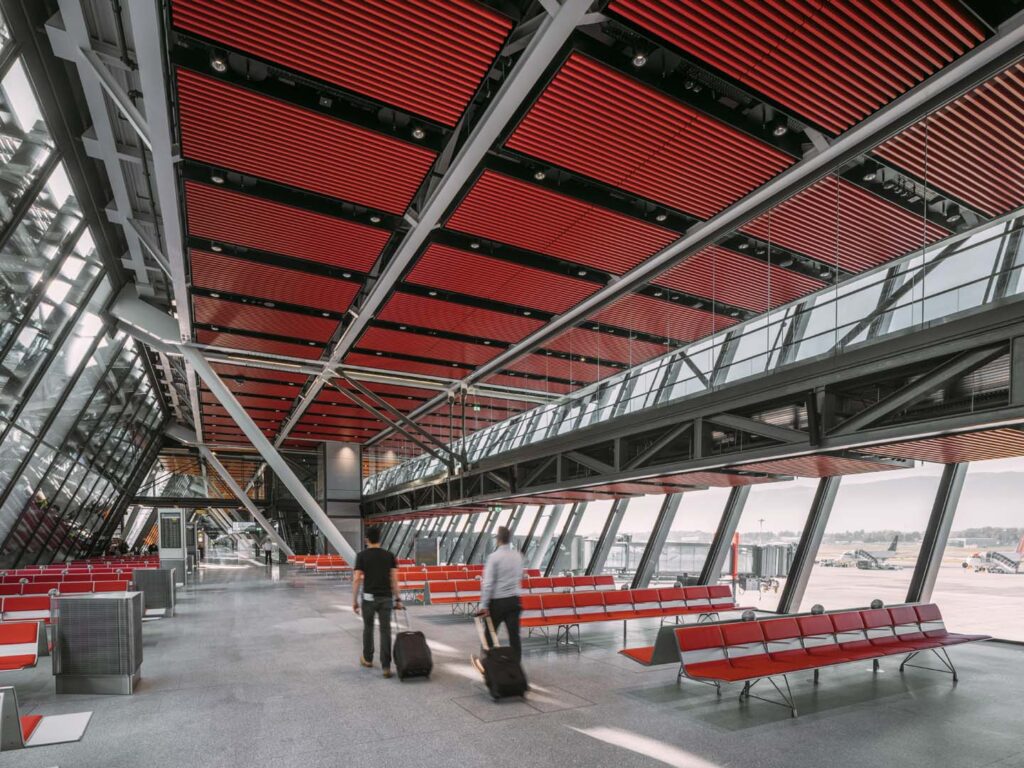Geneva Airport in Switzerland will officially inaugurate its new East Wing this spring after more than a decade of design and construction.
Praised for its green credentials, the new CHF 610m (US$666m) East Wing hosted its first flight in December 2021 with an international departure for New York. This followed two ORAT trials in November and December 2021 involving more than 1,000 volunteer passengers. The official ceremony has been delayed until spring 2022 due to the current pandemic.
The glass-walled rectangular facility stretches 520m in length and can accommodate nearly 2,800 passengers an hour at departures, and 3,000 at arrivals. Architectural practice Rogers Stirk Harbour + Partners designed the project, before handing over to Geneva-based architects Jacques Bugna Atelier d’Architecture. The teams were supported by engineering firms Ingerop (Paris) and T-ingénierie, also based in Geneva.
Mainly designed for long-haul travelers, the East Wing has significantly improved the airport’s energy performance by combining thermal insulation in the departure lounges with high-performance triple-glazed facades featuring solar protection for the summer months.
Electricity is produced by nearly 3,400 photovoltaic panels covering 7,000m2 on the facility’s roof. Heat pumps will also produce and store thermal energy through 110 geothermal probes. The future connection to the GeniLac network will further ensure that the wing is completely run by renewable energy.
André Schneider, general manager of Genève Aéroport (Geneva Airport), said, “My predecessors began this major project, and the new wing embodies the most spectacular work achievement over a decade. This is why we have invested in innovative, essential equipment for the intercontinental connectivity of Geneva in 2030-2040, and even beyond.”
Corine Moinat, chair of the airport’s board of directors, added, “Genève Aéroport now has an asset that is high quality, architecturally daring, aesthetically successful, built sustainably and which meets the requirements of the 21st century.”

